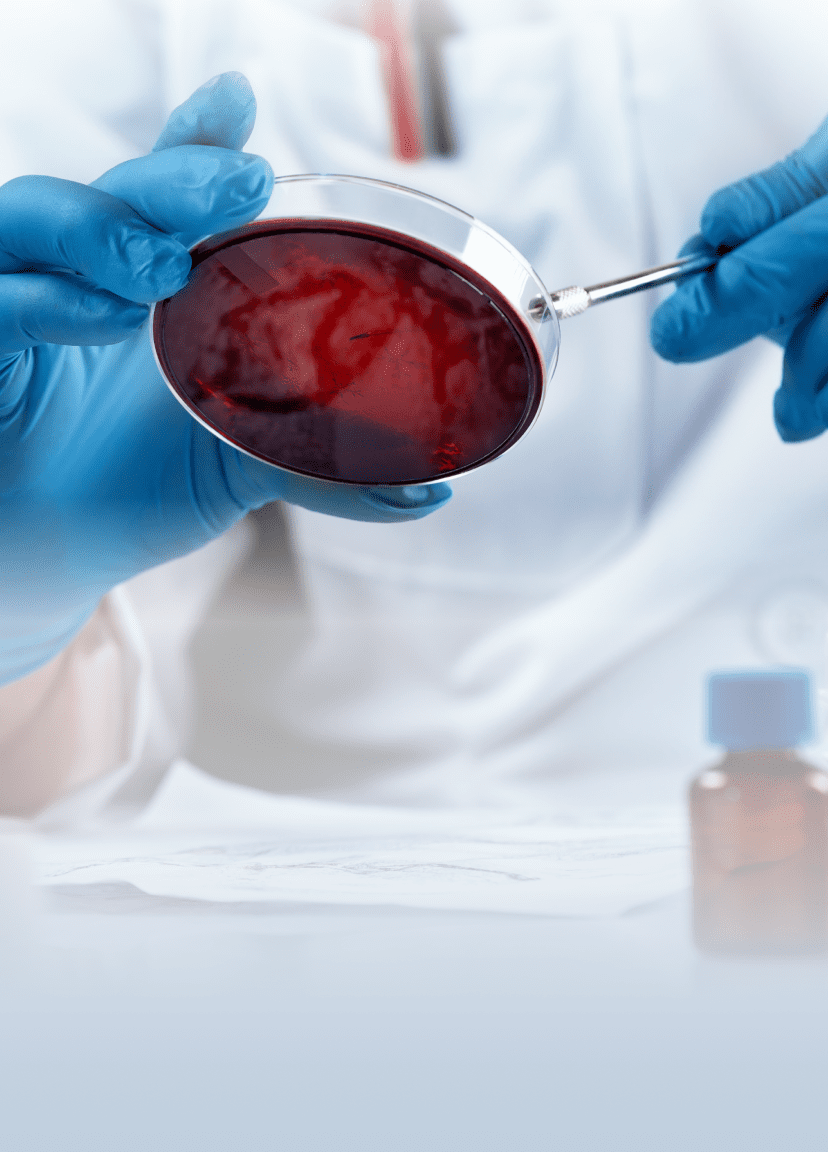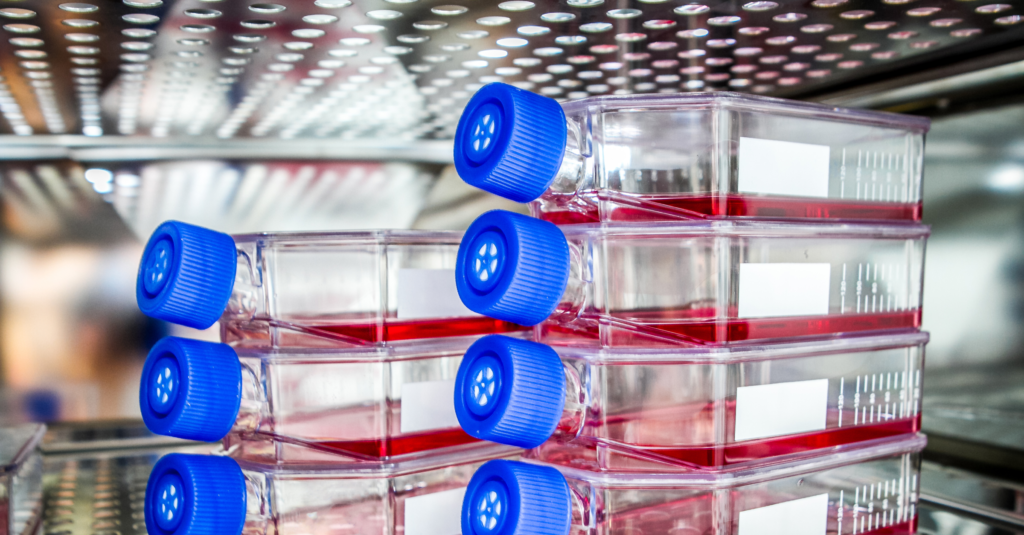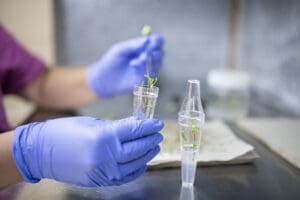

Improving cell culture quality
As cell cultures become more advanced, optimising culture quality is more important than ever
Cell culture is an essential in vitro research tool that aims to recreate physiological processes in a dish to serve multiple purposes. Cell cultures can provide a model for biological investigation, a production unit for valuable cellular components in the biotechnology industry, or as a product themselves as cell therapies. Yet, establishing and maintaining a high-quality cell culture is challenging, with any slight variation in conditions impacting the phenotype, viability, and overall quality of the cell culture.
A quality cell culture lab maintains a high standard of several culture aspects, each with their own unique challenges for researchers to optimise. Although the specific qualities required for a cell culture system will depend on its precise use, such as high growth and metabolism required for recombinant protein production, this article will discuss three cell culture lab requirements that must be prioritised in any scenario: sterility, viability, and reproducibility.
The three key components for a quality cell culture
Cell viability and growth
A high growth rate is critical for a quality cell culture as it allows for a suitable timeframe and quantity of cells to conduct experiments. A primary cell culture that lacks the ability to survive and grow in vitro results in a failed experiment from the onset. Even if established, a quiescent or slowly replicating cell culture is largely unusable in most use cases as the quantity of cells required for experimental purpose is unattainable.
This is becoming increasingly challenging as researchers move away from established cell lines, such as the HeLa cell line that was established in 1951 and remains the most widely used cell line today, to culture all and any cell types available, from animal to plant species. Each new primary cell type requires extensive optimisation of experimental set up to establish the culture and then further optimisation to achieve high growth. Challenges include establishing a cell-specific culture medium, suitable vessel type and coating, seeding density, and passaging protocol. A cell culture with a high grow rate provides many cell generations and sufficient time to perform experiments while increasing the yield required for commercial cell products to be profitable.

Sterility
Once a culture is established and growing, maintaining sterility is arguably the biggest concern in all cell culture applications. The introduction of contaminating microbials at any stage can quickly overrun the cell culture with devastating consequences. At the laboratory level, contamination results in major setbacks and loss of valuable experimental models. When scaled, the consequences are more severe – bioreactor contamination and the subsequent loss of industrial-scale cell cultures can amount to hundreds of millions of dollars of lost product, revenue and regulatory fines1. To this day, most cell culture techniques remain hand operated, and this exposes sensitive cells to contamination during isolation, seeding, passaging, and feeding. Fungal contamination of cell culture incubators is a risk of manual use, as frequently opening the door, poor general hygiene and spillages are all opportunities for contamination of lab equipment for cell culture. It’s clear that maintaining sterility in cell culture is of critical importance as it saves time and costs associated with microbial contamination.
Reproducibility
Reproducibility is a major issue facing biomedical research, with more than 70% of experiments reported as unreproducible in a Nature survey2. A cell culture or experiment that is unreproducible is of little-to-no use to the field, and steps must be taken to ensure the consistency of cultures for it to be considered a quality model. Generating a high-quality cell culture that is easily reproducible drives scientific discovery by enabling multiple labs to study the same or unique questions with a consistent model. It provides the basis for robust results rather than occurrence from experimental variability. In biotechnology, reproducibility means production of homogenous products across batches, resulting in a greater yield, safety, and profitability. In all uses, reproducibility is major requirement for regulatory approval.
Challenges and solutions for improving quality
Operator variability poses a major challenge to these quality components, particularly in larger laboratories with a considerable workforce. No matter how well defined a protocol is, individual operators will introduce variability into manual laboratory techniques – it’s simply unavoidable. Minor mistakes during preparation of cell culture medium can have profound effects on cell phenotype and growth, an operator forgetting to sterilise their gloves can quickly destroy a culture with contamination, and variation in pipette use and seeding of cells can affect the reproducibility of a given experiment3. These quality challenges are only exacerbated when scaling cell cultures by either increasing the culture volume (scale up) or increasing the number of culture vessels (scale out).
Overcoming these challenges to maximise cell culture quality can take several routes. First and foremost, a detailed standard operating procedure should be created and strictly adhered to. To further minimise for operator variability, all staff members should be trained by a single experienced group leader to ensure consistent training of techniques. Segmenting experimental steps to individual or a small number of staff members, such as media preparation, can ensure processes are completed with minimal inter-operator variability. Once in process, the culture conditions need to be constantly monitored to detect for abnormalities that will hinder quality. These processes are constantly being improved through lab automation, such as real-time pH and CO2 monitoring.
Lab automation to improve culture quality
More recently, automated cell culture processes prone to human variation and contamination offers a means to greatly enhance cell culture quality and regulatory compliance. Robotic pipetting can accurately and repeatedly perform automated cell culture liquid handling to reduce errors and variability across many steps such as medium preparation and cell seeding4. Machine learning for the automation of imaging and monitoring processes removes human judgement from subjective tasks such as gauging cell morphology or confluency5. Automated cell culture incubators reduce assay variability by achieving uniform environmental conditions and preventing contamination associated with manual handling of open-door incubators. What’s more, robotic plate handlers can combine these steps into a fully automated workflow that operates from the sterility of a sealed unit – ensuring sterility, efficiency, and scalability.
Automated cell culture systems therefore offer the ability to progress science quickly by improving the components of culture quality discussed in this article. Automation will play a critical role to standardise the manufacturing of cell-based therapies by improving the consistency and therefore regulatory compliance of the cell product4. Further, incorporating these quality factors and automated cell culture lab equipment into the cell culture lab design implements the Quality by Design principles requested by regulators6 – accelerating the drug discovery and approval process.
Learn more about automating cell cultures.
References
- The high cost of contamination in drugs manufacturing. Pharmaceutical Technology. Published September 12, 2018. Accessed April 13, 2022. https://www.pharmaceutical-technology.com/sponsored/high-cost-contamination-drugs-manufucaturing/
- Baker M. 1,500 scientists lift the lid on reproducibility. Nature. 2016;533(7604):452-454. doi:10.1038/533452a
- Lippi G, Lima-Oliveira G, Brocco G, Bassi A, Salvagno GL. Estimating the intra- and inter-individual imprecision of manual pipetting. Clin Chem Lab Med. 2017;55(7):962-966. doi:10.1515/cclm-2016-0810
- Doulgkeroglou MN, Di Nubila A, Niessing B, et al. Automation, Monitoring, and Standardization of Cell Product Manufacturing. Front Bioeng Biotechnol. 2020;8. Accessed April 17, 2022. https://www.frontiersin.org/article/10.3389/fbioe.2020.00811
- Yao K, Rochman ND, Sun SX. Cell Type Classification and Unsupervised Morphological Phenotyping From Low-Resolution Images Using Deep Learning. Sci Rep. 2019;9(1):13467. doi:10.1038/s41598-019-50010-9
- EMA. Quality by design. European Medicines Agency. Published September 17, 2018. Accessed April 17, 2022. https://www.ema.europa.eu/en/human-regulatory/research-development/quality-design

Lab layouts, until the introduction of automation, had seen little change in…
Read more Automation holds the key to unlocking the lab of the future
We explore common problems in plus the advantages and disadvantages of plant…
Read more Plant tissue culture: how automation can help
In this webinar Russell Green, Automata’s Director of Product Growth, talks about…
Read more On-demand webinar: Reshaping cell biology experiments for automation